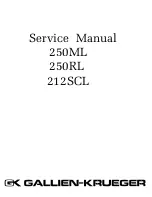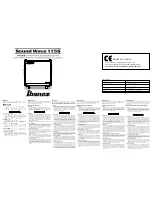
10
WWW.NILESAUDIO.COM
SYSTEM DESIGN CONSIDERATIONS CONTINUED...
CREATING HIGH POWER AMPLIFIER CHANNELS FOR
AREAS THAT REQUIRE MORE VOLUME AND POWER
All of the odd numbered amplifier channels of the SI-1650 (channels 1, 3, 5, 7, 9,
11, 13, and 15) include a power output of 50 or 100 watts that is selected using
a web based IP Configuration utility. When an odd numbered amplifier channel
is configured to100 watts, it’s even numbered adjacent amplifier channel (e.g.
channel 1 and 2, channels 3 and 4, channels 5 and 6, etc.) is deactivated.
There are several situations where having an SI-1650 channel with more power
is an excellent way to improve the sound. There are also applications where
having an SI-1650 channel with more power would seem to be appropriate but
is not recommended.
These are some of the most common DOs and DON’Ts:
1. Outdoors (DO)
— Sound dissipates faster outside than it does in a room
where the walls enclose the sound and reflect it back to the listener. A pair of
speakers playing into a large patio or yard will greatly benefit from two 100
watt channels.
2. Surround Sound Systems (DO)
— The dynamic demands for the center
channel are much greater than the left, right or surround channels. This is an
excellent application for configuring a channel to the 100 watt mode.
3. More than one pair of 8 ohm speakers (DON’T)
— In large rooms or long
hallways, often the best way to get good background music is to install
multiple pairs of speakers. You will deliver sound much more reliably using
two pairs of 8 ohm speakers with four 50 watt amplifier channels than you
would using two 100 watt amplifier channels connected to two pairs of
speakers in parallel.











































